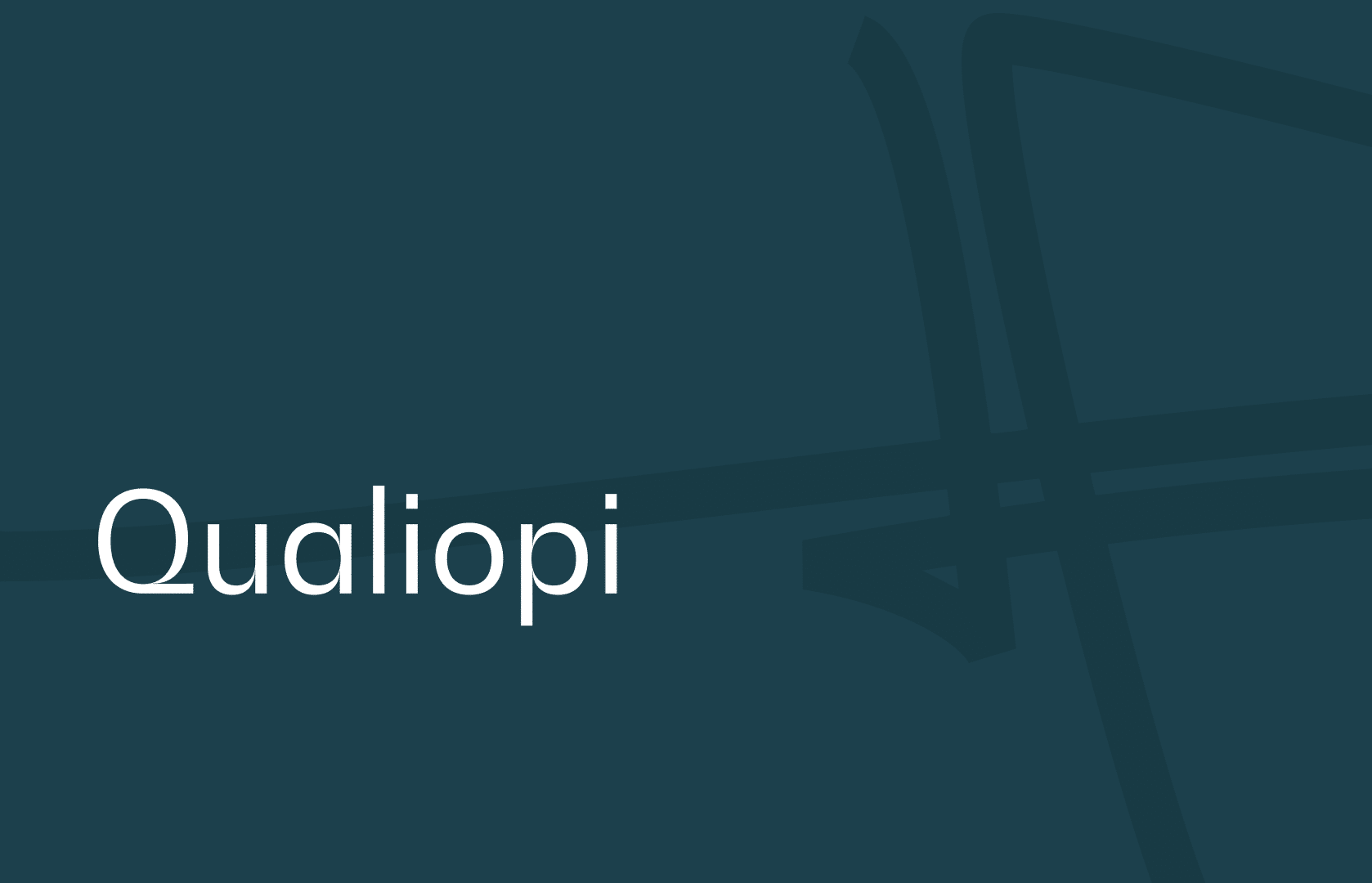Qualiopi certification has become indispensable for any professional training organization worthy of the name. It is awarded on the basis of particularly demanding criteria, but in return, its holders can demonstrate the quality and transparency of their training programs.
Focus on the definition of Qualiopi certification, and the steps to follow to create your own Qualiopi training program.
What is Qualiopi certification?
Inaugurated by a 2018 law on the freedom to choose one’s professional future, Qualiopi certification takes the form of a single national quality reference framework. Through 7 criteria and 32 indicators, this certification provides a framework for skills development training delivered by specialized organizations.
More and more organizations and independent trainers are turning to Qualiopi certification because of the advantages it offers. Transparency is its watchword, in the sense that it guarantees an unrivalled degree of transparency concerning the content, pedagogical and technical resources, as well as the conduct of the training courses concerned. What’s more, obtaining Qualiopi certification enables access to public funding, a considerable asset for the viability and development of any training organization. Please consult our Ultimate Qualiopi Guide to find out more about this quality label.
But before you can apply for such certification, you first need to develop a training program that meets Qualiopi requirements. We can help you with this. Here are the key stages of a Qualiopi training program!
Identify customers’ training needs
The first essential step is to identify the precise needs of customers and learners.
Every industry, every company and every individual has different characteristics. There is no one-size-fits-all rule when it comes to training, especially when it comes to meeting Qualiopi quality criteria. So, to create a training program, you first need to know who the program is intended for. And therefore what needs and skills it should satisfy.
Defining training objectives
Once you’ve identified your learners’ profiles, you can set about determining the objectives of your training program. These are known as pedagogical objectives.
The training program must set out the new skills that learners are expected to achieve by the end of the course. This also includes any pre-requisites, and the conditions under which the training will be carried out. In fact, it’s highly recommended that a real training strategy be put in place.

Develop a detailed training program
The aim here is to plan the training program in detail, without forgetting any aspect of it. Ideally, this program should be in writing. In particular, it should include :
- the precise profile of the target audience, as well as the prerequisites and methods for adapting training objectives to the needs of learners (mandatory mentions since January 1, 2017),
- details of objectives in terms of skills and know-how acquisition,
- fully transparent training content, including the breakdown of the various theoretical and practical phases into sequences,
- the pedagogical, technical, administrative and human resources made available to learners throughout the course (technological equipment, premises, learning aids, etc.),
- the skill level of the training staff,
- the duration of the training course and its detailed schedule,
- the system for monitoring learners’ progress,
- and finally, the detailed assessment system.
So it’s not enough to determine the general content of your Qualiopi training program. The division of knowledge into sub-sequences, the meticulous learning schedule, the details concerning the means made available to the learners, or the monitoring and evaluation of the latter are all factors that need to be fixed from the outset.
To build on this, let’s take a closer look at the importance of training resources. Regardless of their nature.
Determine the technical, pedagogical and human resources required for your Qualiopi training course
When it comes to the resources made available for training, it’s important to remember that these resources are of different kinds. They are both technical and pedagogical, not to mention human, with the skills of the training staff.
A training program claiming to be of Qualiopi quality must therefore meet high quality standards, while ensuring complete transparency on the details of all the resources deployed as part of the training. Training organizations must therefore choose their teaching and technical resources carefully. The simplest advice we can give you is to focus on teaching methods with which you are comfortable, and which you know perfectly well how to use to help your learners achieve their objectives.
What you need to bear in mind is that the pedagogical and technical resources selected must enable the vast majority of learners to achieve their training objectives. Another decisive factor is the constraints linked to the duration of the training and the space available, which influence the choice of teaching resources.
As a general rule, it’s always a good idea to vary your training materials. This not only stimulates learners’ interest and learning, but also diversifies the training offer itself. Participatory exercises, fact sheets, video lessons or case studies are just some of the options you can combine.

Don’t forget training follow-up and evaluation tools
Last but not least: training monitoring and evaluation tools. In the process of creating a training program, over and above its content and sequence, you also need to think about how the learners’ progress will be monitored. And above all, evaluated at the end of the course.
To this end, we recommend that you define your monitoring and evaluation tools from the outset. There are many techniques available, and it’s up to each training organization to choose the one that suits them best. For example, you can opt for specifications, checklists, online software or traditional questionnaires to be submitted to learners.
This not only ensures that learners have achieved their objectives, but also identifies the strengths and weaknesses of your training program.




